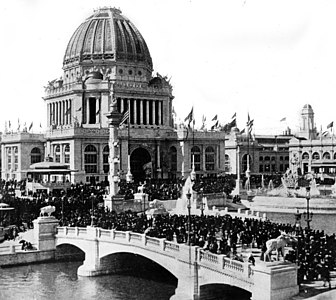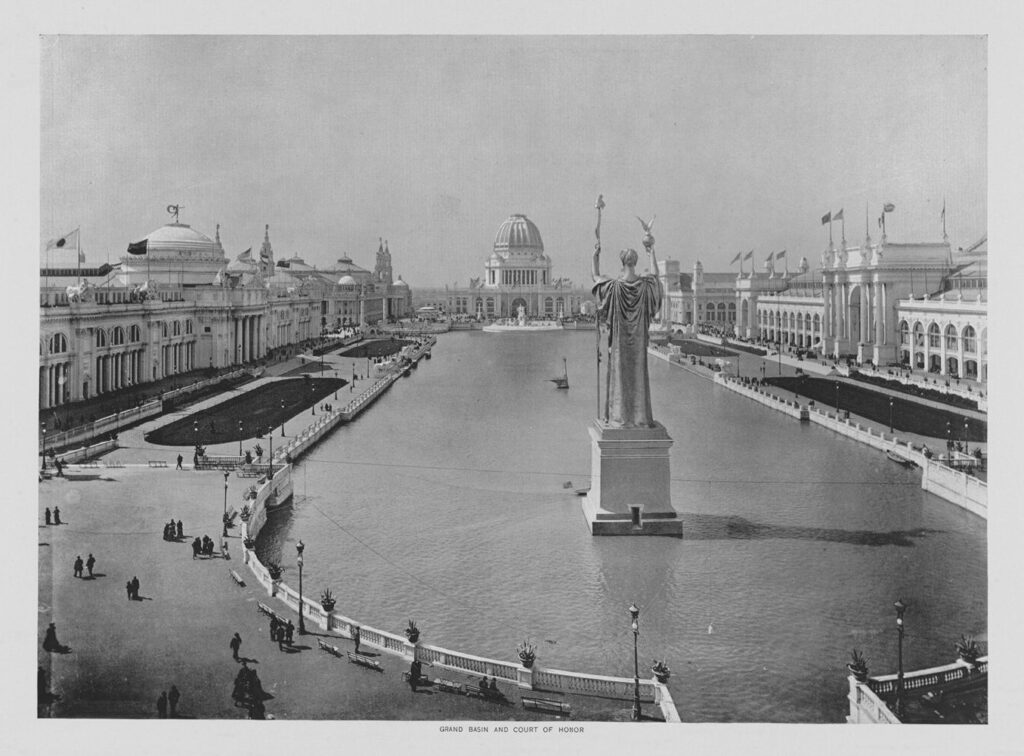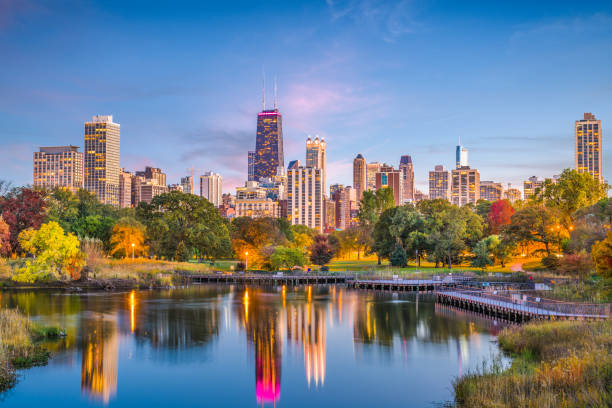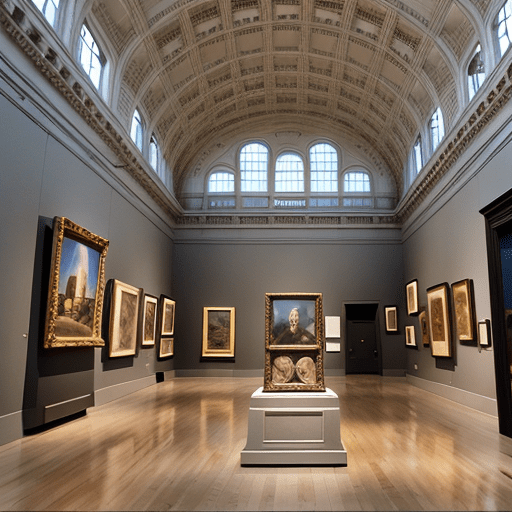The 1893 World’s Columbian Exposition: A Monument of Progress and Innovation
In 1893, the city of Chicago hosted the World’s Columbian Exposition, a milestone event that celebrated the 400th anniversary of Christopher Columbus’s historic voyage to the New World. This monumental fair was a testament to the surge of industrial growth, technological advancements, and cultural diversity that had emerged in America, and it left an indelible mark on the landscape of the city and the nation’s history.
The Inception and Planning of the Exposition
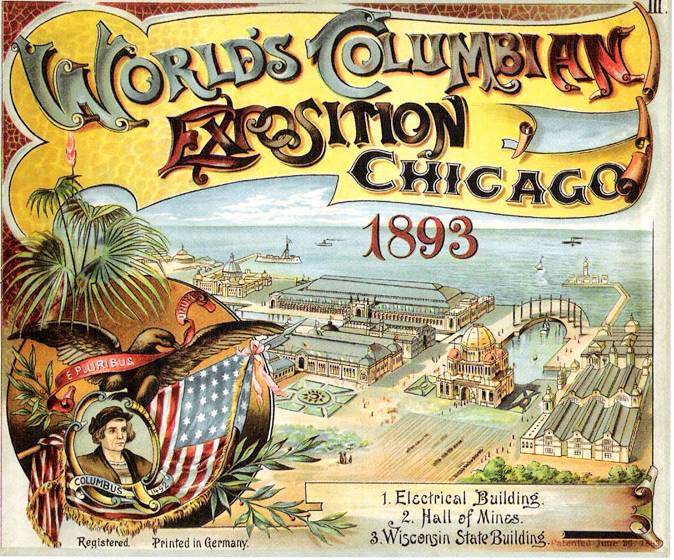
The inception of the World’s Columbian Exposition began in the late 1880s, at a time when the United States was experiencing rapid industrial growth and grappling with class tension. The idea for a world’s fair to commemorate the 400th anniversary of Columbus’s voyage to the Americas came into existence. It was intended to bring together societies fragmented along class lines, much like the successful European world’s fairs.
Chicago, New York City, St. Louis, and Washington D.C. were among the major cities that vied for the opportunity to host this grand event. Chicago, with its strategic location and extensive railroad connections, made a strong case for its selection. The city’s civic and business leaders also pledged to finance the fair, showcasing their city’s capability and determination.
The Design and Architecture: The Magnificent “White City”
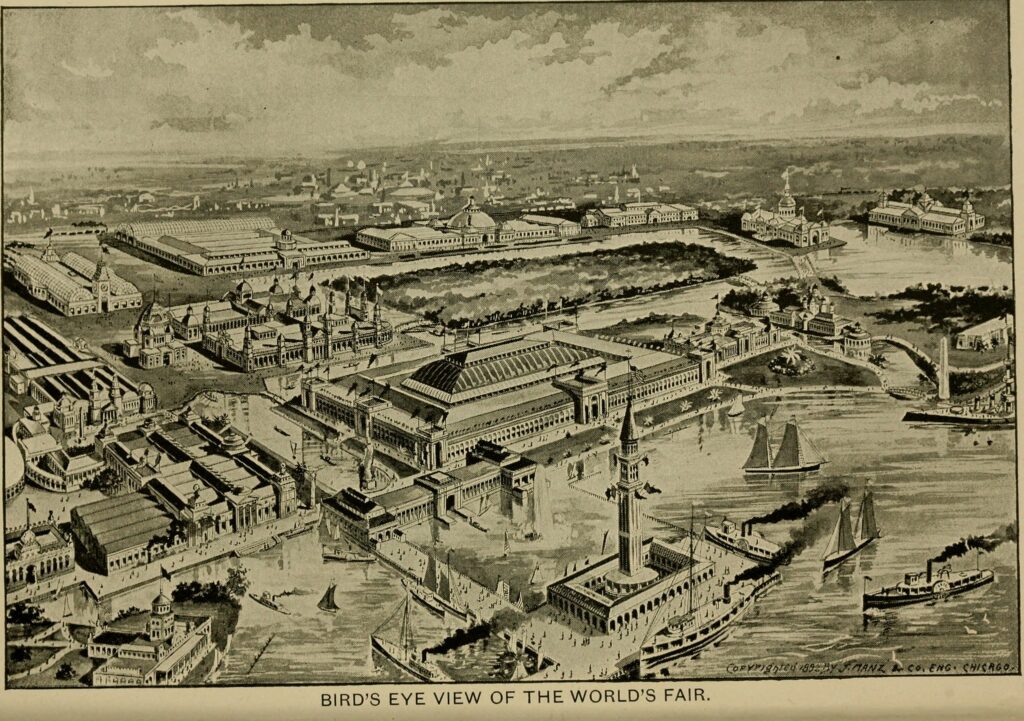
The planning and construction of the exposition were feats of architectural and engineering prowess. The exposition was designed in the neoclassical architectural style, a prominent design trend of the time, which was characterized by grandeur and symmetry. The fairgrounds were laid out around a central water pool, aptly named the Grand Basin, which symbolized the voyage of Columbus.
The exposition buildings, often referred to as the “White City,” were clad in white stucco, a stark contrast to the surrounding tenements of Chicago. The widespread use of electric street lights illuminated the buildings and boulevards, creating a mesmerizing spectacle that could even be enjoyed at night.
Notable Buildings and Exhibits
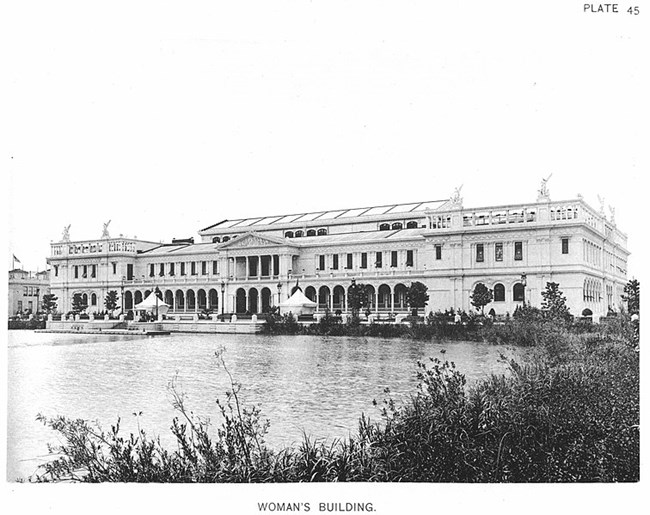
The exposition was home to several grand buildings and exhibits. The Administration Building, designed by renowned architect Richard Morris Hunt, served as the focal point of the fair. The Manufactures and Liberal Arts Building, another prominent structure, showcased works related to literature, science, art, and music.
Among the other notable structures were the Agricultural Building, the Mines and Mining Building, the Electricity Building, and the Transportation Building. Each of these buildings housed exhibits that represented the pinnacle of American and global achievement in their respective fields.
The Midway Plaisance: The Amusement Hub
The World’s Columbian Exposition was the first world’s fair to feature a separate amusement area, known as the Midway Plaisance. It showcased a variety of attractions, from carnival rides, including the first-ever Ferris Wheel, to exhibits of “exotic” cultures.
Advancements and Innovations Showcased
The exposition was a platform for showcasing numerous technological and industrial advancements. Several products that are still popular today were introduced at the fair, including Juicy Fruit gum, Cream of Wheat, and Pabst Blue Ribbon beer.
One of the most significant attractions at the fair was the Ferris Wheel. Designed by George Washington Gale Ferris Jr., this engineering marvel was a major draw for visitors and played a crucial role in the fair’s financial success.
The Legacy of the Exposition
The World’s Columbian Exposition left a lasting legacy on American architecture and urban planning. The “White City” served as an inspiration for the City Beautiful movement, which aimed to beautify American cities through grand architectural projects and well-designed public spaces.
In addition to influencing the aesthetics of American cities, the fair also had a profound impact on American culture. It introduced Americans to a variety of cultures and concepts, fostering a new sense of global awareness and cultural appreciation.
The Remaining Structures
While most of the grand buildings of the exposition were temporary structures and have since been demolished, a few have survived. The Museum of Science and Industry in Chicago now occupies the former Palace of Fine Arts, the only building from the exposition that remains in its original location.
The 1893 World’s Columbian Exposition served as a testament to the progress and innovation of the time. It introduced the world to new products, ideas, and cultural experiences, while also leaving a lasting impact on the city of Chicago and American urban design. The fair was a remarkable showcase of human achievement and remains a significant part of American history.
SOME FACTS ABOUT THE 1893 WORLD’S FAIR IN CHICAGO
FOOD WAS TRANSFORMED BY THE FAIR
The 1893 World’s Columbian Exposition, which has been referred to as “the fair that changed Chicago,” gave us many of the food and drinks we still enjoy today. Juicy Fruit gum, Cracker Jack, brownies and the beef sausage that would become the base of the Chicago-style hot dog all had their start at the White City. Pabst beer has even boasted that their blue ribbon award came from this exposition.
NATIONWIDE, CIVIC BUILDINGS FOLLOWED THE BEAUX ARTS STYLE THAT WAS PROMINENT AT THE FAIR
Daniel Burnham, the head designer of the fair, selected the Beaux Arts architecture style for the main constructions. This type of design is renowned for its ornate details such as columns, pediments, statues, symmetry, and stone. Burnham’s preference for this style would have a lasting impact on structures in the United States for many years to come. If you take a look at most of the town’s city halls, libraries, and courthouses built during the start of the 20th century, you’ll notice similarities between them and the buildings of the World’s Fair.
WOMEN’S RIGHTS RECEIVED A VICTORY
Bertha Honore Palmer, a renowned Chicago socialite and the namesake of the Palmer House Hotel, was a leader in the fight to give women the right to vote. She was the chair of the Board of Lady Managers, the first governing body of its kind, and her efforts saw the creation of the Woman’s Building at the World’s Fair. This building was designed by Sophia Hayden, one of the first female architects to graduate from the Massachusetts Institute of Technology. Inside the Woman’s Building were works of art, crafts and murals, all made by women.
WHO’S FERRIS? THE CITY OF CHICAGO ALMOST HAD A HUGE VERSION OF THE EIFFEL TOWER IN ITS BACKYARD.
At the 1889 Paris World’s Fair, Gustave Eiffel presented his iconic tower, which soon became a global attraction. When the Chicago World’s Fair committee began organizing the exposition, they asked American architects to construct something that would outshine Eiffel’s work. The committee was presented with ideas such as the first bungee jump and a 1,500 foot-tall tower made from logs. Eiffel offered to build a towering structure, bigger than his Parisian one, but the U.S. engineering community requested an American design it. The committee settled on George Washington Ferris’s plan, which was the Ferris Wheel.
RAILWAYS, WEALTH, AND ENDURANCE: THE FAIR EXPERIENCE SHOWED IT ALL
Multiple cities put in bids to host the Columbian Exposition of 1893, including Chicago, New York City, Washington, D.C., and St. Louis. All four of them made compelling arguments, especially Washington, D.C. as the home of our government and New York due to it being the country’s biggest city. So why did Chicago come out on top? Congress gave a few explanations for their selection, like Chicago’s comprehensive railway network, its central location, and the fundraising efforts of its citizens that totaled more than $5 million. Nevertheless, there was an additional factor: Chicago’s resoluteness. Whilst New York highlighted its logistical abilities, Chicago demonstrated its toughness. It had emerged from the ruins of a destructive fire to become an embodiment of America’s ambitions—a vigorous, brash metropolis where anything was possible.
